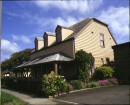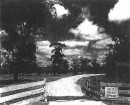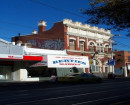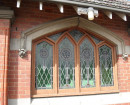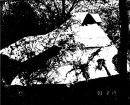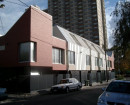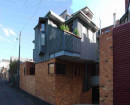Back to search results
Derrimut Hotel
132 Durham Road, SUNSHINE VIC 3020 - Property No 57
Sunshine Commercial Precinct
Derrimut Hotel
132 Durham Road, SUNSHINE VIC 3020 - Property No 57
Sunshine Commercial Precinct
All information on this page is maintained by Brimbank City.
Click below for their website and contact details.
Brimbank City
-
Add to tour
You must log in to do that.
-
Share
-
Shortlist place
You must log in to do that.
- Download report
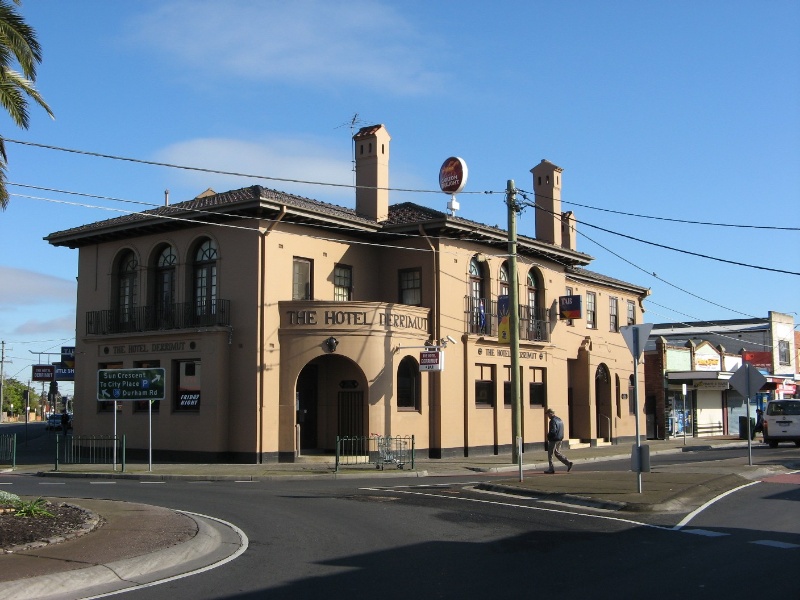
2012 - Brimbank City Council Post-contact Cultural Heritage Study 1999

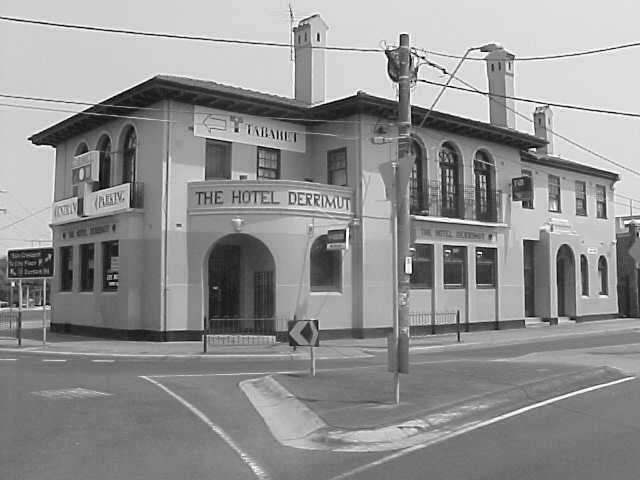
On this page:
Statement of Significance
Individual place statement of significance::
The Derrimut Hotel is of regional historical and architectural significance as the first hotel to be built in the Sunshine area, in spite of opposition from the McKay firm. Thought to be of considerable architectural significance at the time of its opening, the hotel remains a major landmark in the locality and one of a small number of Spanish style hotels in the Melbourne metropolitan area. The owner, Mr Long, had '... insisted on having [a building] worthy of the town'. (Sunshine Advocate, 29 March 1929) Such a substantial and costly structure was a significant indicator of the growth and importance of Sunshine by the late 1920s. It became a popular drinking-place for local people. The establishment of this large hotel reflects the importance of Sunshine as the main centre in the district and the shift of the community centre from Braybrook (where the nineteenth century hotel was located).
Precinct statement of significance::
This Sunshine commercial precinct is of local historical and social significance as a part of a suburb created by Australia's leading industrialist, which set a milestone in the development of the industrial suburb under the influence of the Garden City movement. Sunshine became a yardstick for planning and housing reformers, with H.V. McKay being regarded as an expert on planned industrial housing. The McKay estate is of historical significance as it marks a crucial phase in the development of Sunshine, reflecting a period when McKay encouraged or directly provided services to the resident work force, such as recreation and retail facilities, in order to develop a stable local economy.
The precinct is of architectural significance in representing the prevailing interwar style of relatively unadorned parapeted single story shop fronts. The precinct includes community, civic and commercial premises. While the building stock provides a representative sample of generally typical small shops of the period, Sunshine does contain some more elaborate designs (such as the Derrimut Hotel), some of which can be ascribed to J Raymond Robinson, who fulfilled the role of company architect for the McKay Sunshine Harvester Works.
Characterised generally by low flat corrugated iron clad roofs cantilevered verandahs, the buildings are also set on typical narrow frontage allotments, with small rear yards (now generally redeveloped for storage or parking. The provision of commercial allotments close to the station was consistent with the garden suburb character that was intended in the original town planning designs, and perpetuated in the perceptions of Sunshine's character. In the early 20th century Sunshine's generous suburban estates were atypical of working class housing of the period.
The Derrimut Hotel is of regional historical and architectural significance as the first hotel to be built in the Sunshine area, in spite of opposition from the McKay firm. Thought to be of considerable architectural significance at the time of its opening, the hotel remains a major landmark in the locality and one of a small number of Spanish style hotels in the Melbourne metropolitan area. The owner, Mr Long, had '... insisted on having [a building] worthy of the town'. (Sunshine Advocate, 29 March 1929) Such a substantial and costly structure was a significant indicator of the growth and importance of Sunshine by the late 1920s. It became a popular drinking-place for local people. The establishment of this large hotel reflects the importance of Sunshine as the main centre in the district and the shift of the community centre from Braybrook (where the nineteenth century hotel was located).
This Sunshine commercial precinct is of local historical and social significance as a part of a suburb created by Australia's leading industrialist, which set a milestone in the development of the industrial suburb under the influence of the Garden City movement. Sunshine became a yardstick for planning and housing reformers, with H.V. McKay being regarded as an expert on planned industrial housing. The McKay estate is of historical significance as it marks a crucial phase in the development of Sunshine, reflecting a period when McKay encouraged or directly provided services to the resident work force, such as recreation and retail facilities, in order to develop a stable local economy.
The precinct is of architectural significance in representing the prevailing interwar style of relatively unadorned parapeted single story shop fronts. The precinct includes community, civic and commercial premises. While the building stock provides a representative sample of generally typical small shops of the period, Sunshine does contain some more elaborate designs (such as the Derrimut Hotel), some of which can be ascribed to J Raymond Robinson, who fulfilled the role of company architect for the McKay Sunshine Harvester Works.
Characterised generally by low flat corrugated iron clad roofs cantilevered verandahs, the buildings are also set on typical narrow frontage allotments, with small rear yards (now generally redeveloped for storage or parking. The provision of commercial allotments close to the station was consistent with the garden suburb character that was intended in the original town planning designs, and perpetuated in the perceptions of Sunshine's character. In the early 20th century Sunshine's generous suburban estates were atypical of working class housing of the period.
Show more
Show less
-
-
Derrimut Hotel - Physical Description 1
Description
This large Spanish style hotel is set on a major corner site and features a terra-cotta tiled roof and rendered walls. Arcading is used on both levels, with multi-paned glazing and fan lights in the main windows and glazed doors to balconettes. Notable elements include the pseudo bell towers with their Cordova tile cappings, the bracketed eaves and raised pressed cement lettering, spelling out the building's name. The hotel addresses the corner with curved and faceted forms to provide a distinctive response to an unusual wedge-shape site, as well as separation of function from one side of the hotel to the other. It faces another notable Spanish-style shop in Durham Road and is a major part of an unusual commercial precinct. As constructed in 1929 the exterior walls were of brick with granite tiles, and a buff-coloured stucco. Cordova tiles were used for the roof and were Australian-made (probably Wunderlich). The public staircase to the first floor was of Queensland maple. There were 18 bedrooms on the first floor. Work on the interior walls (using the 'Kraftex treatment') was said to be similar to that used for the new Comedy Theatre and was carried out by master-craftsmen from the United States. A large cellar (35 feet by 40 feet) was built under the bar room.Derrimut Hotel - Physical Conditions
Condition/integrity
In good condition and externally shows a high level of integrity, apart for the current pink paint scheme. Roof tiles have been replaced from the Cordova to a Marseilles pattern and minor changes done to the fenestration, along with the addition of numerous unrelated signs which cover architectural elements.Derrimut Hotel - Historical Australian Themes
8 Developing Australia's cultural life
8.4 Eating and drinkingHeritage Study and Grading
Brimbank - Brimbank City Council Post-contact Cultural Heritage Study
Author: G. Vines
Year: 2000
Grading: Local
-
-
-
-
-
MASSEY FERGUSON COMPLEX
 Victorian Heritage Register H0667
Victorian Heritage Register H0667 -
HV MCKAY MEMORIAL GARDENS AND CHURCH
 Victorian Heritage Register H1953
Victorian Heritage Register H1953 -
HV MCKAY OFFICES
 Victorian Heritage Register H1966
Victorian Heritage Register H1966
-
'YARROLA'
 Boroondara City
Boroondara City -
1 Bradford Avenue
 Boroondara City
Boroondara City
-
-






